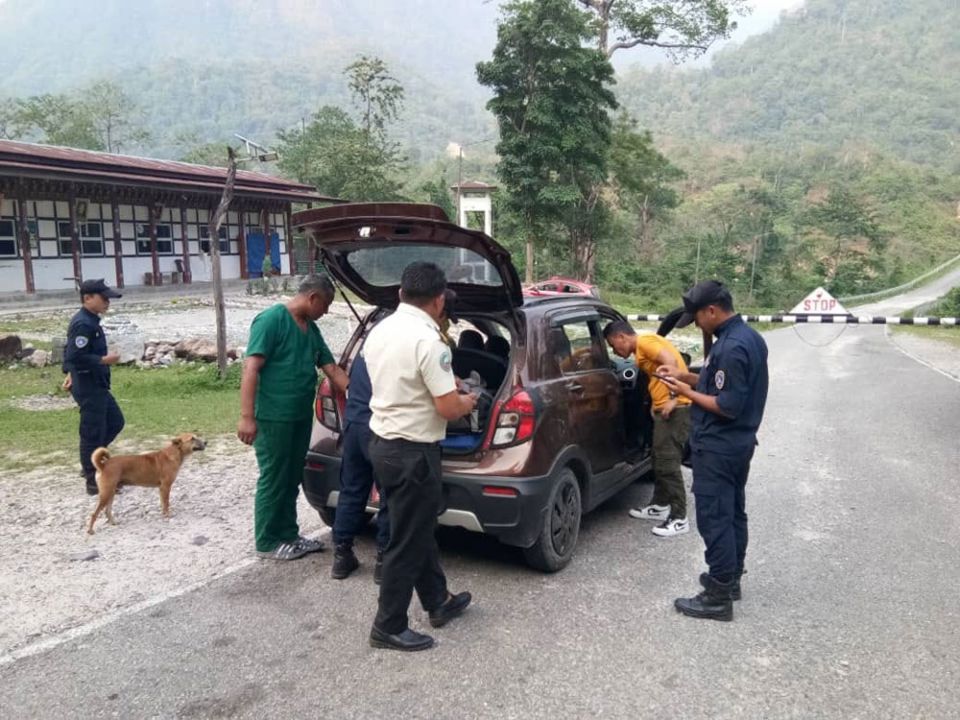
Experts from South Asian countries are charting out a plan to prevent and control Transboundary Animal Diseases (TADs) to reduce their impacts on livestock and livelihoods of farmers in the region.
By the end of the five-day first Global Framework for the Progressive Control of Transboundary Animal Diseases (GF-TADs) coordination meeting in Paro on May 12, the region will have key activities to prevent and control Peste des petits ruminants (PPR), with the adoption of next steps for PPR control in the region.
PPR, also known as sheep and goat plague, is a highly contagious animal disease affecting domestic and wild small ruminants.
In Bhutan, the livestock sector contributes 8.71 percent to the Gross Domestic Product. However, the sector is inflicted with varieties of animal diseases spread from the border areas, for which government spend millions to contain it.
As the five-day meeting is underway, the officials in Lhamoidzingkha in Dagana are busy fighting the second outbreak of African Swine Fever (ASF) in the drungkhag.
Experts say that animal diseases such as ASF, PPR, avian influenza (AI), lumpy skin disease (LSD), and foot and mouth disease (FMD) are fast spreading among animals in the country.
The first case of ASF, a highly contagious viral disease, was reported in Bhutan on May 13 in 2021 in roaming pigs in Phuentsholing. Bhutan became the 16th country to report the disease in Asia.
On April 15 last year, a new ASF outbreak occurred on a semi-commercial pig farm in Sampheling, Chukha. In early November, outbreaks were confirmed in Pemathang and Dewathang in Samdrupjongkhar. Recently, cases have been confirmed from three domestic pig farms in Sarpang and Dagana.
Controlling ASF outbreaks cost the government more than Nu 21.2 million last year.
Chief Veterinary Officer Rinzin Pem said: “LSD, PPR, and FMD are fairly new diseases reported from the southern parts of the country due to the movement of people and animals in the border towns.”
Bhutan reported LSD during the pandemic in 2020. Within three years, the country reported 428 cases of LSD.
“LSD decreases the productivity of animals and has huge socio-economic implications,” Rinzin Pem said.
The outbreak of PPR was first reported from Chukha in 2010.
According to records, there were 10 outbreaks of PPR to date with a mortality rate of 32.14 percent. Out of 438 cases, there were 174 deaths. “The outbreak is associated with animal imports from the southern region,” said an official from the livestock department.
The last PPR outbreak in the country was reported in 2020.
In Bhutan, poor surveillance and a lack of vaccination programmes to control these diseases have increased the risk of infection among animals.
In June last year, the Department of Livestock launched three livestock diseases (ASF, LSD, and brucellosis) control plans. There is no regional strategy to control TADs, however.
In the South Asian region, PPR, FMD, and LSD have increasingly and severely impacted the productivity of the livestock sector and the livelihood of smallholder farmers. In low and middle-income countries, experts said that TADs had resulted in losses in production, utility and income, creating a compounding effect on the livelihoods, food security and nutrition of smallholders.
The World Organisation for Animal Health in coordination with the Food and Agriculture Organisation and the Department of Livestock hosted the coordination meeting.
International and regional experts are attending the sessions.












